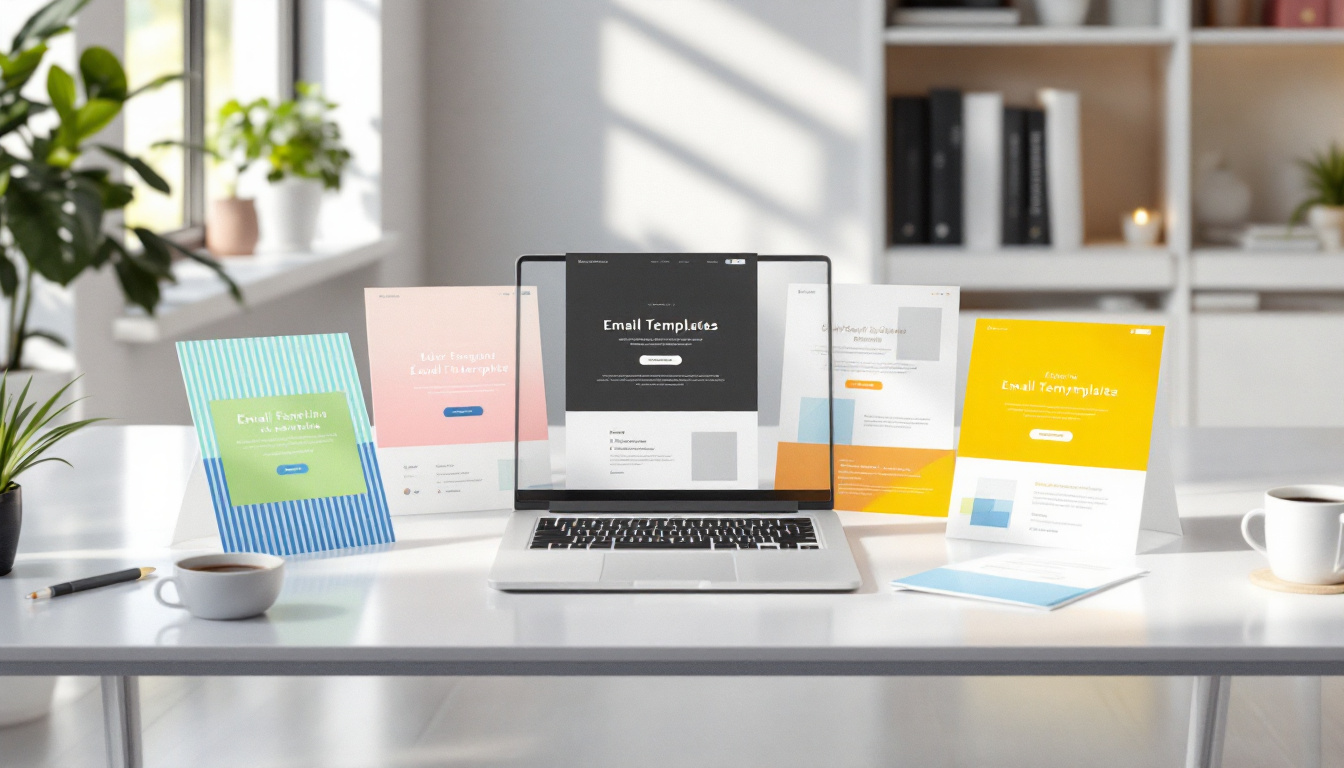In a sales world where customer relationships are built as much by the quality of the message as by the sales strategy, following up with a prospect after sending an offer is a crucial step. In 2025, mastering the art of personalized email templates becomes essential to ensure effective sales follow-up. Faced with the multitude of digital opportunities, knowing how to write impactful messages that respect timing and customer communication is emerging as a lever for lead conversion and customer nurturing. A positive response is no longer limited to a simple follow-up; it becomes the result of a thoughtful process where each point of contact must strengthen the commercial relationship and clarify the next step. Why Follow-Up Is a Strategic Step in the Sales Strategy Following up after sending an offer is not an intrusive approach, but a way to foster relationship marketing with the prospect. In a context where 60% of purchasing decisions are influenced by personalized follow-up, it’s vital not to settle for a single contact. Follow-ups allow you to establish a dialogue, gather feedback, address potential objections, and re-emphasize the offer being proposed. A recent market study shows that 70% of prospects become customers after at least two follow-ups. When well-orchestrated, these approaches offer a definite competitive advantage. Using email templates tailored to the different phases of the purchasing process not only optimizes customer communication but also promotes lead conversion. The key elements for writing an effective follow-up email after sending an offer
To maximize the impact of each follow-up, certain fundamental elements must guide the writing. By avoiding the pitfalls of spam or information overload, it becomes possible to achieve a response rate above 50%. Here are the essential criteria:
Precise Timing : Wait 48 to 72 hours depending on the nature of the offer and the prospect’s decision. Strong Subject Line
: A subject line that provides added value or arouses curiosity. High Personalization : Use the prospect’s name and reference the previous interaction. Clarity and Conciseness: Get straight to the point with a concrete proposal.
Call to Action
: A gentle incentive to respond, schedule an appointment, or request feedback.
- A simple and effective structure might look like this: open with a reference to the previous offer, follow up with the contact, suggest a clear next step, and thank them. The goal is to strengthen the customer nurturing approach by providing real added value at each stage. Concrete examples of email templates for following up with a prospect after sending an offer To illustrate this approach, here are five proven email templates that facilitate sales follow-up while remaining tailored to each stage of the sales cycle:
- Type of follow-up Subject
- Body of the message Initial follow-up
- Follow-up on our proposal to optimize your project Sincerely,
- Follow-up after no response Can you give me your feedback on our offer?
I simply wanted to check if you had a chance to think about our proposal. Please feel free to share your comments or any objections.
I look forward to speaking with you.
Follow-up with a new proposal A proposal adjusted to meet your expectations Following our last exchange, I have adapted our offer to better meet your needs. I invite you to review it attached and give me your feedback. We remain at your disposal, Follow-up to schedule an appointment
| Let’s arrange a meeting to discuss your project in more detail. | I would like to speak with you this week to discuss your project in more detail following our proposal. What time slot would be best for you? | I look forward to discussing it. |
|---|---|---|
| Final follow-up | Final attempt to move our collaboration forward | I’ll get back to you one last time to see if you’d like to continue this process. I remain available for any questions or future appointments. |
| Have a great day, | These templates provide a solid foundation for adhering to customer communication best practices while increasing your response rates. Click here to discover other examples of | email templates for following up with a prospect after an offer has been sent. Strategies to adopt to personalize your follow-up email templates |
| In 2025, simply using standard templates is no longer enough. The key lies in the ability to personalize each message according to the prospect’s profile and specific context. Whether it’s a follow-up with a decision-maker in an SME or a major account, each situation requires precise adaptation. | Here are some effective methods to increase the relevance of your emails: | Use dynamic variables: Insert the first name, company name, or reference to a specific exchange to create a sense of proximity. |
| Integrate industry references: | Show that the offer is tailored to the prospect’s specific challenges. | Provide tangible value: For example, share a case study or a recent statistic in their sector. |
| Adapt to the buying cycle: | Depending on whether the prospect is in the evaluation or decision phase, adjust the tone and focus. | An automation platform like HubSpot or Pipedrive allows you to integrate these variables and analyze their impact. This also facilitates customer nurturing monitoring. and optimizes relational communication. |
Essential tools to automate and track your follow-ups after sending an offer Faced with inbox saturation and the need for precise sales follow-up, automation tools are becoming essential. In 2025, intelligent follow-up campaign management relies on several professional solutions:Tool
Main Features
Benefits
HubSpot
- Segmentation, automatic personalization, advanced reporting Precise tracking, time savings, creation of personalized sequences
- Pipedrive Interaction tracking, task automation, visual pipeline
- Clear view of the customer journey, scheduled follow-ups, real-time adaptation Saleshandy
- Sequence automation, merge tags, notifications Send personalized emails in bulk, track engagement, follow-up effectively
ActiveCampaign Marketing automation, lead scoring, detailed analytics Automatically qualifies prospects, optimizes each step of your sales strategy
LinkedIn Sales Navigator
Targeted prospecting, automated messages, profile enrichment Precise identification of decision-makers, support in nurturing These tools allow you to structure personalized follow-ups and automate the sending of email templates for Follow up with a prospect after an offer has been sent. The combination of analytics and artificial intelligence also facilitates decision-making, while reducing the time spent on manual follow-ups.
| Key indicators for measuring the success of your customer follow-up | Managing a follow-up campaign relies on a detailed performance analysis. In 2025, compliance with monitoring indicators allows you to evolve your sales strategy and improve customer communication. | KPI |
|---|---|---|
| Description | Objective | Open rate |
| Percentage of emails opened compared to the number sent | Maximize visibility | Click-through rate |
| Number of clicks on a link or call-to-action button | Engage the prospect to the next step | Response rate Proportion of recipients who respond Get real feedback and start the conversation |
| Conversion rate | Number of prospects converted into customers after follow-up | Measure the actual effectiveness of monitoring |
| Return on investment (ROI) | Ratio between the profits generated and the cost of the campaign | Justify customer nurturing efforts |
By following these KPIs, it becomes possible to adapt the sending sequence in real time or adjust the message to evolve your sales strategy. The key lies in the use of advanced analytics tools, which provide a precise view of the performance of each email template in the follow-up process. Best practices to optimize your post-offer communication A relational communication successful cannot be improvised. In 2025, consistency between the recovery strategy and the quality of the content, combined with mastery of the tools, makes all the difference. The important thing is to build a relationship based on trust, relevance and responsiveness.
Tips for increasing the effectiveness of your reminders
Relaunch at the right time
| : After 2 to 3 days, then with an appropriate frequency. | Vary messages | : Alternate between offers, questions, and value propositions. |
|---|---|---|
| Humanize the tone | : Avoid overly commercial or impersonal language. | Insert evidence |
| : Testimonials, figures, customer cases. | Adapt the communication channel | : Complete the email with a LinkedIn message or a phone call. |
| What works in 2025 is an active listening strategy coupled with sophisticated automation technology. The goal is not simply to relaunch, but to sustainably engage the prospect in a process of | trusted mark | . |
| Mistakes to avoid for an effective follow-up after an offer has been sent | The temptation is great to try to multiply follow-ups to avoid missing the opportunity. However, persisting in an ill-calibrated manner can have counterproductive effects. In 2025, certain common mistakes continue to undermine the effectiveness of sales follow-up. Mistake | Description |
| Impact | Following up too frequently | Sending repeated messages without waiting for a response |
Annoys the prospect, risks spam, and builds brand fatigue
Omitting added value
Email networks without relevant or personalized content Decreased open and response rates Failure to adapt to the context
Using the same templates for different profiles or companies
- Loss of impact, impression of indifference Ignoring weak signals
- Failure to track indicators or fail to personalize based on the interaction Convergence toward failure, wasted resources
- Failure to automate intelligently Systematic manual follow-ups without appropriate tools
- Waste of time, late responses, low ROI By avoiding these pitfalls, follow-ups become a true relationship marketing tool, allowing you to build a lasting and profitable relationship. The key is to combine relevance, appropriate frequency, and human communication to transform each follow-up into a concrete opportunity.



